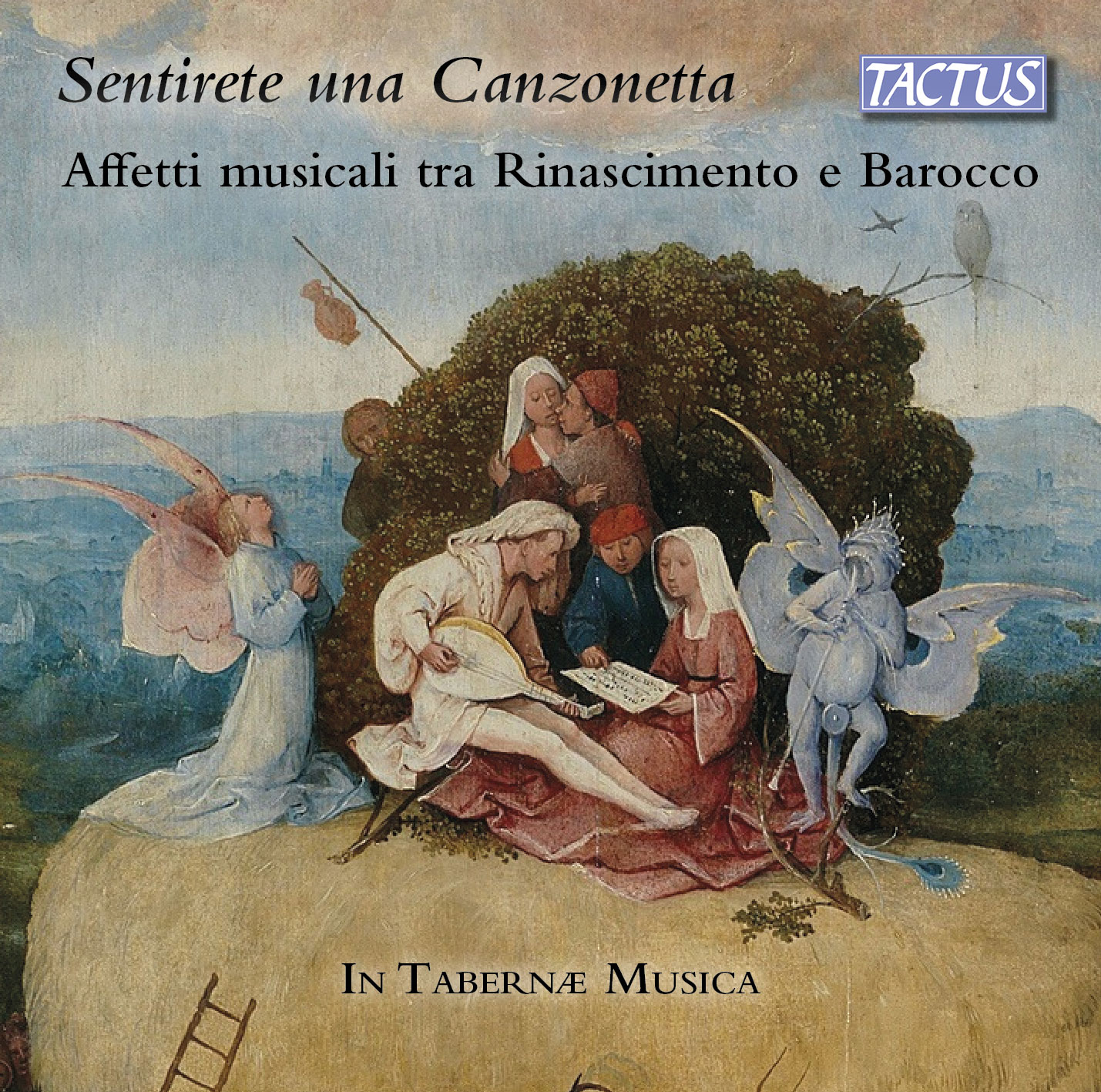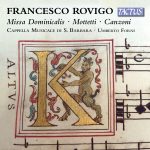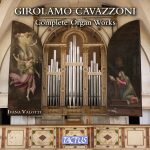Enrico Radesca di Foggia (sec. XVI-1625), Giuseppino del Biado (sec. XVII), Andrea Falconieri (1585 ca.-1656), Anonimo (sec. XVII), Giovanni Felice Sances (1600-1679), Girolamo Frescobaldi (1583-1643), Tommaso Pace da Perugia (sec. XVII), Vincenzo Calestani (1589-p. 1617), Tarquinio Merula (1595 ca.-1665), Pellegrino Possenti (sec. XVII), Giorgio Mainerio (1535 ca.-1582), Claudio Monteverdi (1567-1643).
In practical terms, we might imagine we are taking a walk in a street of an Italian city, at the beginning of the seventeenth century. Our gaze and our attention are attracted by a series of musical objects that come from different backgrounds: each, in its own way, relates and represents a different possible interaction between man and music, between the needs of the former and the function of the latter.
So the musical content of this CD presents a cross-section of the typical aesthetic features and diversified representative expressions that were most appreciated by the public during the late Renaissance and early Baroque.
The idea of the opposition between thesis and antithesis became the driving force of an astonishing creativeness. Ciaccone, Passacaglie, Canzonette, Villanelle and various dances were the synthesis of an ardent, sparkling musical and social energy.
The style of the ensemble’s performance stems chiefly from the study of the iconographic sources, from which there emerges an artistic production that is targeted not exclusively at the educated class, but also, and above all, at the people: the practice of music was enjoyed in the streets, houses and taverns, and often depicted in joyful, sensual, lewd attitudes.
Precisely in those places where there was no etiquette, music became an “art form” and a mirror of the period, perhaps in a more complete, genuine way than it did elsewhere.
Tracklist
2. Giuseppino del Biado (sec. XVII), Fuggi fuggi 3:58
3. Andrea Falconieri (1585 ca.-1656), Begl’occhi lucenti 2:02
4. Anonimo (sec. XVII), Ciaccona 1:30
5. Anonimo (sec. XVII), Cecona 1:44
6. Enrico Radesca di Foggia (sec. XVI-1625), Sy vos pretendeys 3:15
7. Giovanni Felice Sances (1600-1679), Usurpator tiranno 3:54
8. Girolamo Frescobaldi (1583-1643), Canzon Seconda à due canti 2:43
9. Tommaso Pace da Perugia (sec. XVII), Sta pur ben nostro bel fusto 2:22
[dal libro Poesie amorose, 1638]
10. Giovanni Felice Sances (1600-1679), Accenti queruli 3:47
11. Vincenzo Calestani (1589-p. 1617), Damigella tutta bella 2:10
12. Anonimo (sec. XVII), Monicha 4:10
13. Tarquinio Merula (1595 ca.-1665), Folle è ben chi si crede 5:22
14. Pellegrino Possenti (sec. XVII), De’ miei preghi tutt’altera 3:28
15. Andrea Falconieri (1585 ca.-1656), O bellissimi capelli 3:09
16. Giorgio Mainerio (1535 ca.-1582), Schiarazzula marazzula 3:18
17. Claudio Monteverdi (1567-1643), Sì dolce è il tormento 5:49
18. Tarquinio Merula (1595 ca.-1655), Sentirete una canzonetta 4:08
- Composer: Enrico Radesca di Foggia (sec. XVI-1625), Giuseppino del Biado (sec. XVII), Andrea Falconieri (1585 ca.-1656), Anonimo (sec. XVII), Giovanni Felice Sances (1600-1679), Girolamo Frescobaldi (1583-1643), Tommaso Pace da Perugia (sec. XVII), Vincenzo Calestani (1589-p. 1617), Tarquinio Merula (1595 ca.-1665), Pellegrino Possenti (sec. XVII), Giorgio Mainerio (1535 ca.-1582), Claudio Monteverdi (1567-1643).
- Performers: In Tabernæ Musica
- Musicological Text: Massimo Lombardi
- Historical Period: Humanism and Renaissance
- Code: TC 580002
- Edition: September 2016
- Barcode: 8007194106213
- Set: 1
- Total tracks: 18
- Total duration: 01:00:53
- Notes: World Premiere Recording (tracks 1, 9, 12) · Historical Instruments
- Texts: Sentirete una canzonetta – Musical “Affetti” of the Renaissance and Baroque period







